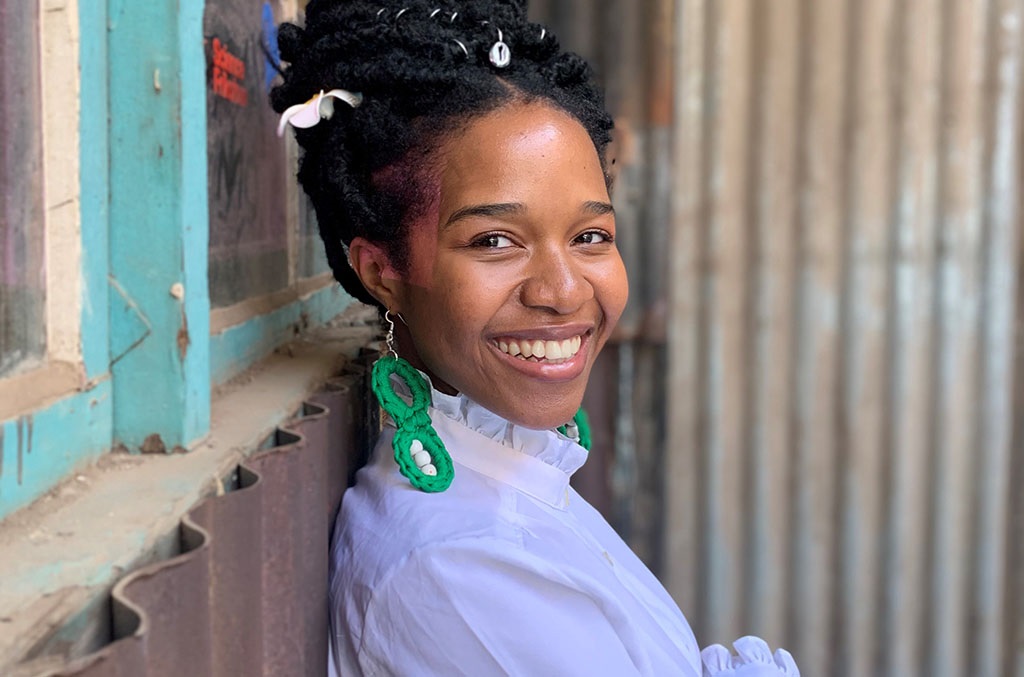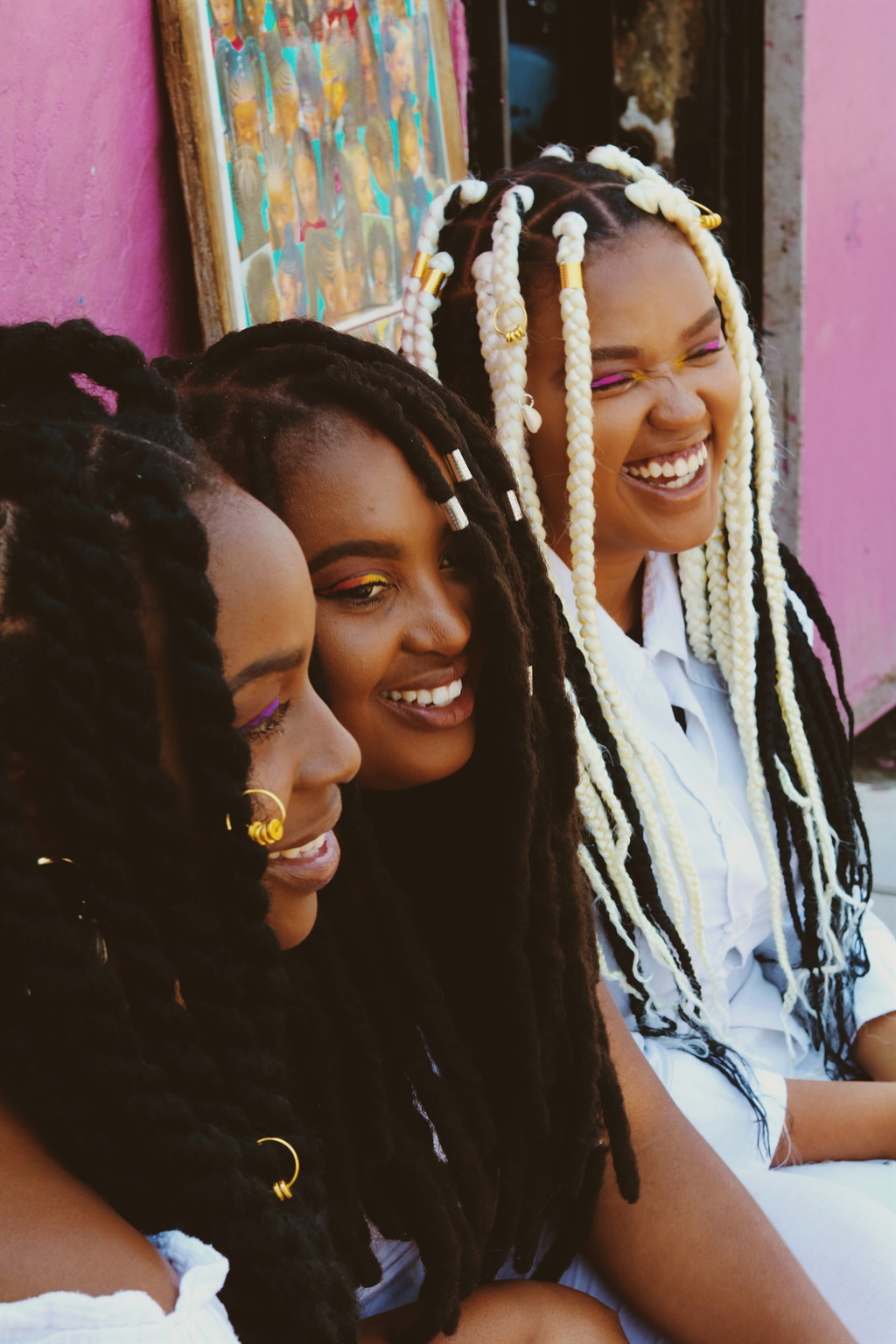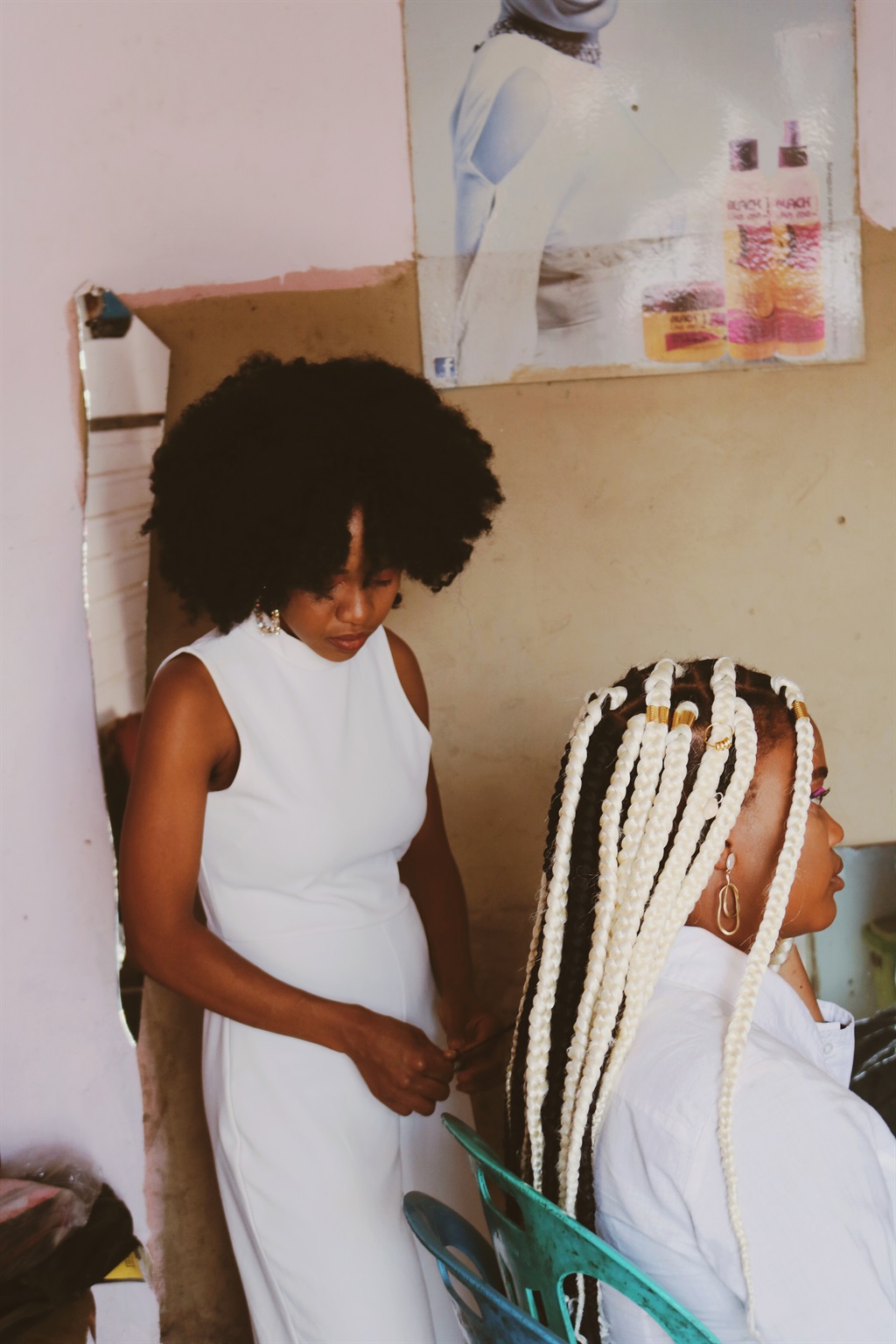
- 'Beauty is pain' is an idea often associated with hair braiding and is accompanied by other myths that don't promote hair health.
- Founder of BraidsByVuyo, Nomvuyo Morgan, busts the myths around tight and painful braids lasting longer and being neater.
- She suggests ways to prepare your hair for braiding, aftercare to ensure your braids remain protective and tips on how to spot a braider that may harm your hair.
There are many misconceptions about black hair that transcend generations, this includes the myth that black women's hair doesn't grow or that shrinkage is the worst thing that can happen to hair. Among these prevailing myths is that extreme tension and pain produce better and long-lasting braiding styles.
This, of course, is not the case.
Nomvuyo Morgan, the founder of independent braiding service BraidsByVuyo, addresses the myth of painful braids being of a "better quality".
Nomvuyo studied architecture, but ultimately followed a career in the haircare business and has completed two haircare courses as an addition to her braiding skills. She suggests ways to prepare your hair for braiding as well as aftercare to ensure your braids remain protective.
"Beauty is pain," is a phrase many girls hear as they grow up. This idea, that you have to suffer through pain to achieve a standard of beauty, has been applied with braiding and is often associated with braids that are neater and last longer. Nomvuyo, however, says there is no truth to this.
She explains, "It was something that was made a standard because there was no understanding of our own hair and no love of our own hair and I think we grew up in a culture that normalises abuse on our hair".
She adds that the technique is what makes a braiding style last long as well as the braider's understanding of hair and what hairstyles are suited for what hair types.
READ MORE | Strenuous styling can deplete your hair of protein and moisture, here's what you need to know
Preparation before braiding is key
Natural hair requires different preparation techniques compared to hair that has been chemically straightened. For example, Nomvuyo says, if you request the Straight Up braiding style, but your hair has shrinkage, the stylist may consider braiding your hair while it's damp (not wet) or blow-dry the hair (which is not always recommended to do often). A braider with an understanding of hair will use the correct technique for a specific hair type, which can contribute to the hairstyle lasting long, without damaging the hair.
Because preparation plays such a key role in braiding styles, Nomvuyo suggest the following before getting your hair braided:
Step 1: Detangle: Make sure your hair is detangled before you do any hairstyle and if you know how to detangle your own hair, do so beforehand, that makes the stylist's job much easier.
Step 2: Stretch: Once hair is detangled it needs to be stretched if it's curly/coily/kinky. You can stretch it using methods like African threading or you can do twists or even blow dry it using a cool setting on the blow dryer.
Step 3: Moisturise: Ensure that your hair is adequately moisturised.
She says these steps allow the hair to blend with the hair extensions (fibre) used and can contribute to a hairstyle that lasts "longer". Nomvuyo is quick to note that shrinkage is not bad but is actually a sign of healthy hair. "It's just that when you want to manipulate your hair you want to prepare it adequately, which is where the technique comes in. That's really the basis of it, it's not about the fibre that you're using, it's not about the braids themselves, it's about handling it correctly before you braid it," she says.
READ MORE | Meet the hairstylists behind the head-turning looks of Michelle Obama, Rihanna and Zozi Tunzi
At times, the braider says she finds herself having to re-educate a few clients who request tighter braids because they believe it will produce better results but reassures them that she will install the braids to look neat.
"I have to explain to them, you don't have to make it excruciating to make them look presentable. So, it's still a mindset thing, which comes from a lack of understanding of hair. [But] it's not really a problem it just comes up here and there," she says.
But, how does one define what neat braids truly look like?
"I think neat braids are braids that blend almost seamlessly with your own hair, but it doesn't mean that they have to be tight," Nomvuyo says that’s what she considers neat.
And to that, she adds, "Precise lines make a huge, huge difference in the appearance of braids. This is my architecture side coming in, symmetry, I’m obsessed with symmetry. It takes a while to open a middle part because I section the hair accordingly and then I go over that middle part over and over until I feel like it's right... once you've mastered neat lines then you don't have to grip as tightly as you think you need to grip."
Are braids really protective hairstyles?
A question that has been getting traction among natural hair bloggers and hair experts is whether braids are truly protective styles? Nomvuyo says there are ways to ensure that your braiding style remains protective and this rests with the aftercare process.
"There are some braids that are more protective than others. So, for braids to qualify as a protective style they mustn't be heavy, they mustn't be tight and they mustn't strain your hair in any way - so, lightweight, painless braids," she says.
Your contribution as the person who has braids is with aftercare, she says. You want to ensure you follow these tips:
- You need to keep them moisturised and you need to keep your scalp clean.
- Protect your hair with a satin pillowcase or a doek when you sleep.
- Make sure you don't tie tight buns and make sure your hairline isn't affected as much as possible.
- A braiding style shouldn't be kept for longer than the recommended six weeks.
- Don't forget to cleanse, but focus on the scalp so as not to get the whole head wet because that makes it heavy and pulls on your hair and your neck and it takes a long time to dry.
READ MORE | Gorilla Glue Girl: After a month and over 15 washes, doctor removes heavy duty glue from woman's hair
Nomvuyo says it's also important that you don't install braids on your hair back-to-back and suggests you have a month-in month-off system because braiding back-to-back will affect your hairline, damage your scalp and you don't get to experience your hair fully and get to understand it.
She explains, "You have to have a relationship with your own hair and a basic understanding of your own hair, and sometimes that takes going to a good hairstylist to actually learn that. I give consultations, everyone who get[s] braid[s] basically get[s] a free consultation on how to care for their hair if they want to, if it's someone who doesn't know. We speak about routine, we speak about diet, we speak about things that they are doing that are potentially harming their hair and so forth."
READ MORE | 'I declined a job offer after months of unemployment solely because they commented on my afro'
How to check if a braider will be good to your hair
Doing a bit of research before you put your full trust in a hairstylist can save you some pain in the long run. Nomvuyo says initial management of your hair when you arrive at the braider and their attitude towards your natural hair are signs it might not be the best place to go to. She also suggests other ways to see if a hairstylist will be good to your hair or not.
She says, "An easy thing is if this person can send you a photo of their work. If you can detect that from a photo of a person's work, you zoom in and you can see the roots are being pulled to the point that you can see, don't go to that hairstylist - they braid tightly.
"If you can't get a picture just go have a visit, you should know by just the way they handle your hair upfront what kind of a braider they are. If you told them once, 'you're braiding tightly' and they say 'okay, okay I'll decrease the tension' but then they continue, don't continue with that braider. I know it sounds extreme, but you’re putting yourself at risk if you stay in that chair knowing that this hairstyle is painful.
"Obviously, if they're going to suggest you blow-dry your hair - if it's not within reason, and they suggest that you relax your hair, don't stay there because they don't know how to manage natural hair."
Follow us on social media: Facebook, Twitter, Instagram.
Sign up to W24’s newsletters so you don't miss out on any of our hot stories and giveaways.




 Publications
Publications
 Partners
Partners













